You may have noticed a paucity of posts since my daughter and I returned from Japan. It’s not for a lack of birding action. In fact, the past couple of months have seen our busiest birding in a couple of years. Braden has been strenuously counting eastern songbirds while I have been crisscrossing the state on various writing and speaking assignments, some of which I hope to share with you when I get several deadlines out of the way. Meanwhile, big thanks to our recent guest poster Roger Kohn for stepping in during our delinquence! And now, for today’s story . . .
The second weekend in June, my work took me to Montana Audubon’s Wings Across the Big Sky Festival, to be held in Great Falls. I had received a surprise invitation to speak at the event as well as lead two birding outings to one of Braden’s and my favorite Montana hotspots, Benton Lake National Wildlife Refuge. The festival kicked off on a Friday afternoon, but I cunningly calculated that if I got up early, I could get in a couple of solid birding sessions beforehand on the east side of the divide. I was on the road by 5 a.m. and cautiously drove into the dawn on Hwy 200, headed toward Great Falls. Why cautiously? Because this was the time of greatest risk of striking deer and other animals on the highway. Near Lincoln, in fact, I passed a dead elk and a smashed up car flashing its hazards off to the side of the road. I drove by, but then thought, “Wait. What if someone is still inside of that car?” and quickly turned around. Fortunately, I discovered no bleeding bodies, but it reinforced my caution as I continued my journey.
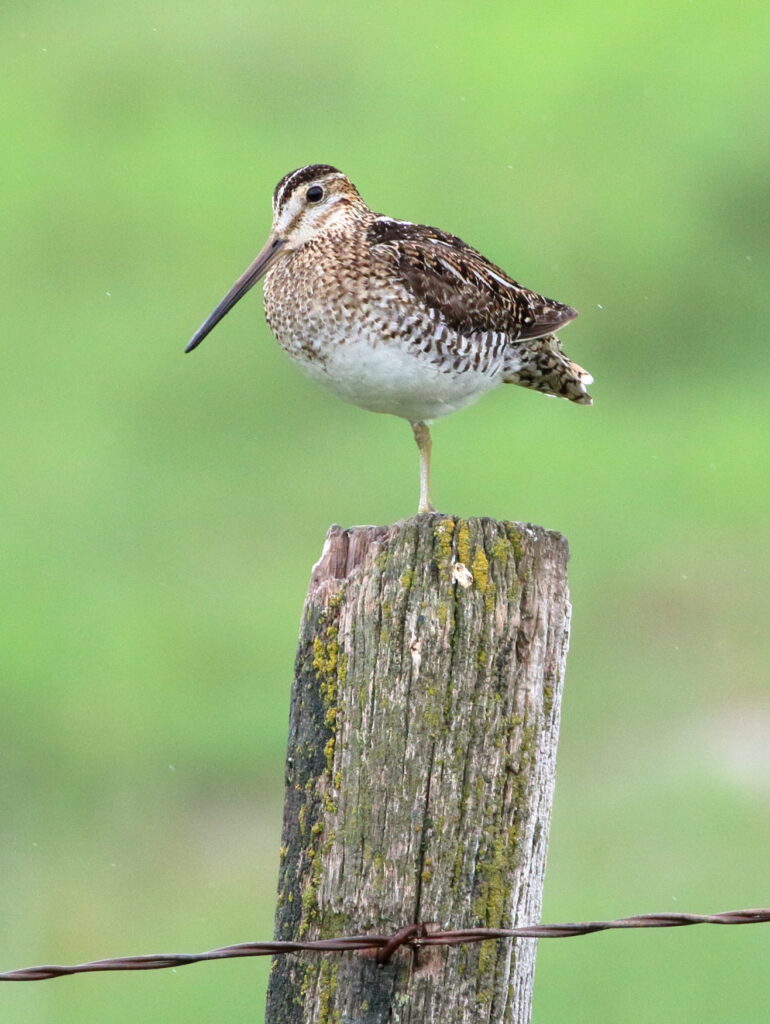
The first stop on my birding agenda was Freezeout Lake, a place readers will be familiar with from past posts. Since we began birding, Braden and I have visited Freezeout more than a dozen times—and not just when the lake receives its famous influx of tens of thousands of Snow Geese migrating north in March. Over the years, we had made great discoveries at all times of year, including Clark’s Grebes, Tundra Swans, awesome shorebirds, and our Lifer Short-eared Owl. One bird that had always eluded us? American Bittern.
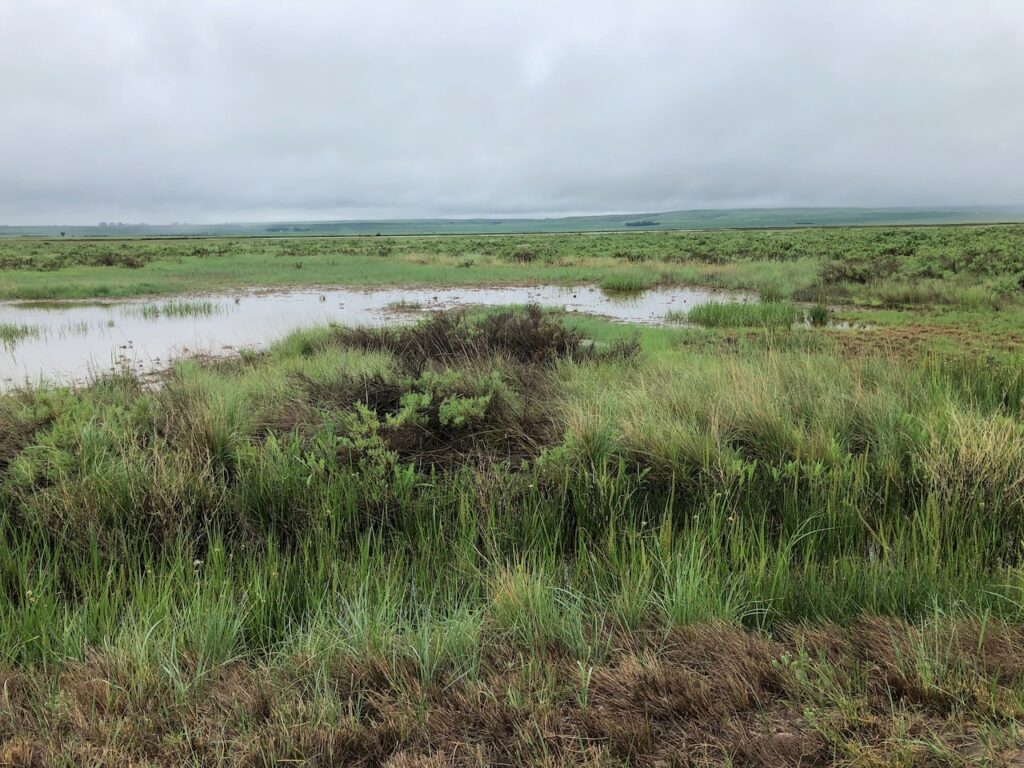
“I don’t understand it,” Braden told me via telephone the night before I left. “Other people go to Freezeout and see bitterns right in front of them, but we’ve never seen one there.”
“I guess we just haven’t paid our dues,” I said. “But I’ll keep a close eye out for them.”
Despite this promise, I held little hope of seeing one of these secretive birds. For one, they were thinly scattered across the state. Braden and I had heard one in the Swan Valley two years ago, and I had heard another at Bowdoin in 2022, but we had never seen a bittern in Montana, and I didn’t expect to this morning. Nonetheless, I arrived at Freezeout before 8:00 a.m. and eagerly set out along the management area’s dirt roads. Northern Shovelers and Gadwalls sat in the middle of the road, only reluctantly moving out of my way as I approached. Savannah Sparrows and Killdeer called through my open windows. I spotted several Wilson’s Phalaropes and, out on the water, a complement of American White Pelicans and Western Grebes. I especially searched for Short-eared Owls, but not a one was to be seen. After spending half an hour tolerating the mosquitoes, I turned around and made my way back to the beginning of the main driving loop.
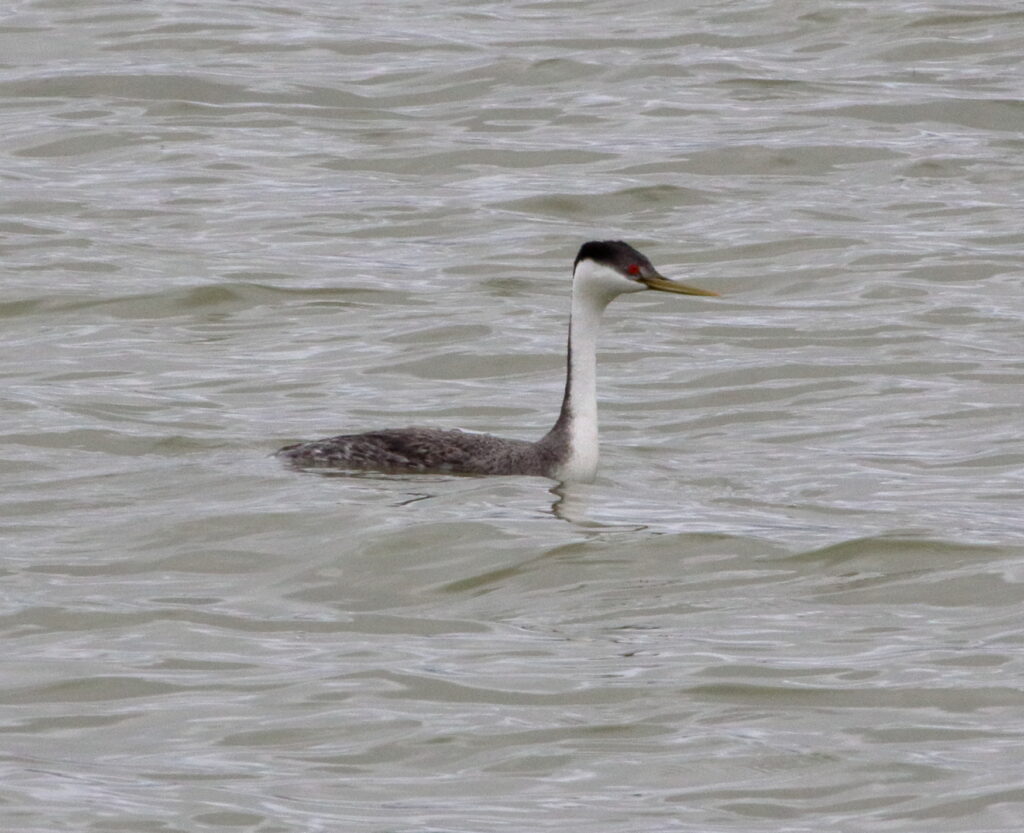
Turning left onto the loop, I sharpened my senses as I guided my minivan into an area of thick cattails and brimming canals. Yellow-headed Blackbirds emitted their harsh cacophony and I heard a Sora in the distance. Glancing out my right window, I hit the brakes.
“No way,” I said.
Like most birders, I had been victim to wishful thinking countless times while birding, but as soon as I saw the thing standing out among the cattails a hundred yards away, I knew what it was. American Bittern!
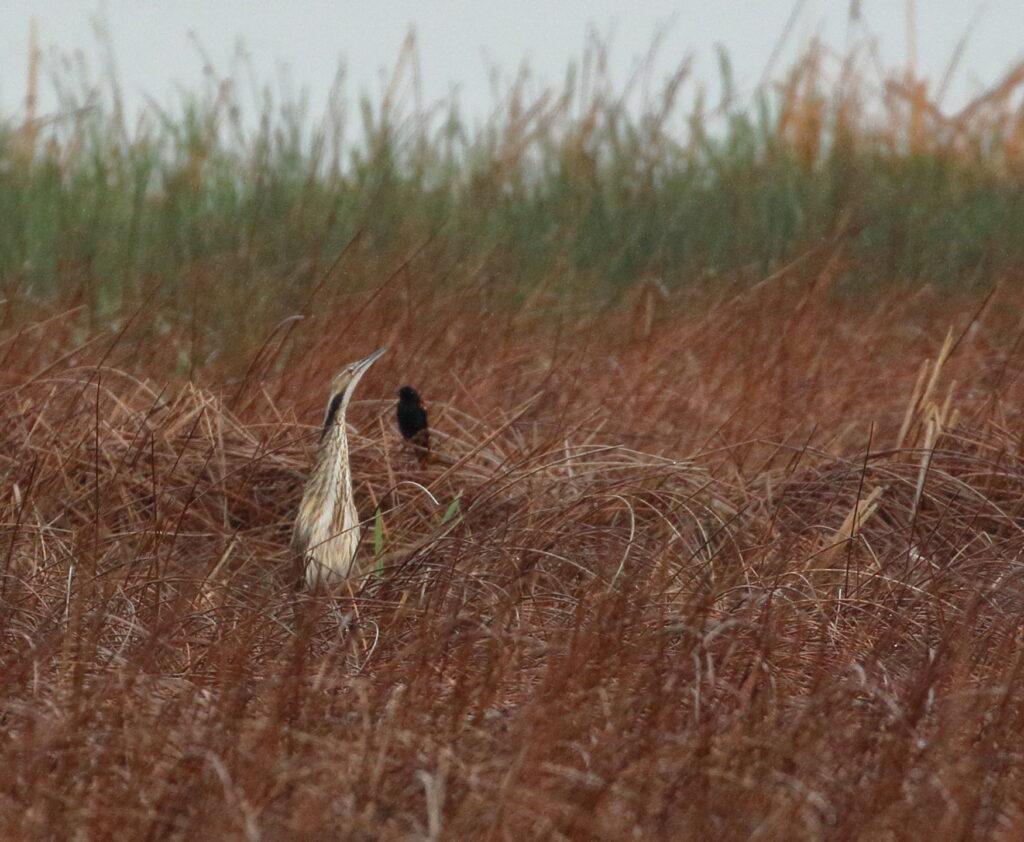
I turned off the engine, picked up my camera, and quietly climbed out of my minivan. I took several documentation photos and then silently studied this remarkable apparition through my binoculars. American Bitterns truly are bizarre-looking creatures. Grouped with shorebirds, bitterns display some of the most superior camouflage in the bird world. Brown overall, with brown and white stripes running down their long necks, they are famous for their “freeze pose” in which they extend their necks vertically, making them blend in almost perfectly with the cattails or rushes around them. In fact, as I watched, the bittern held this pose for several minutes before lowering its head and looking for food.
As famous as their freeze pose is, their call matches it for bizarreness. A deep guttural sound that some describe as pump-er-lunk, the bird sounds like nothing else in the natural world. The first time Braden and I heard it in the wild, I hardly believed it was real and accused Braden of playing it on his phone. It was real alright, and this morning, to my amazement, the bittern in front of me emitted this sub-woofer sound across the marsh.
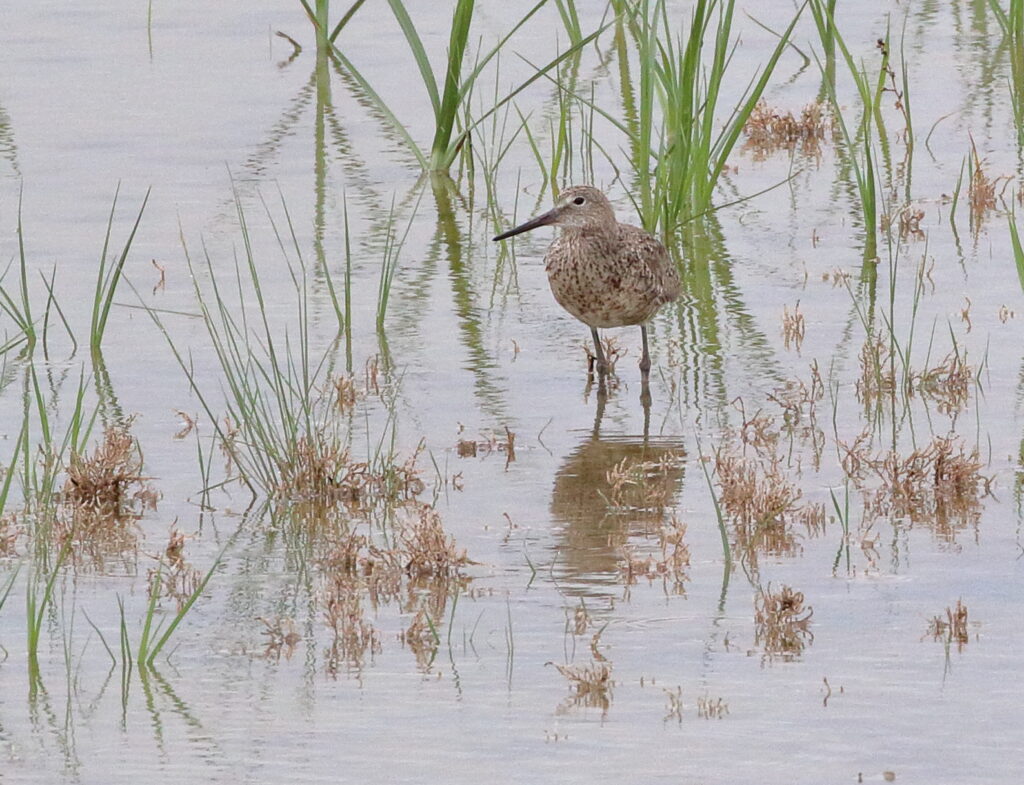
After a few minutes, the bird flew away, and I watched it go, still in shock that this bird had decided to grace me with an actual sighting. I knew it could be a long time before I saw another one. Once hunted widely, bitterns continued to decline through the twentieth century due to wetlands loss and degradation, and perhaps pesticides. According to Cornell Labs’ Birds of the World, “Remarkably little is known about the biology of this species.” As I continued driving, though, I hoped that this one-of-a-kind bird would continue to find safety and nesting areas in Montana—even if I never personally got to see one again.
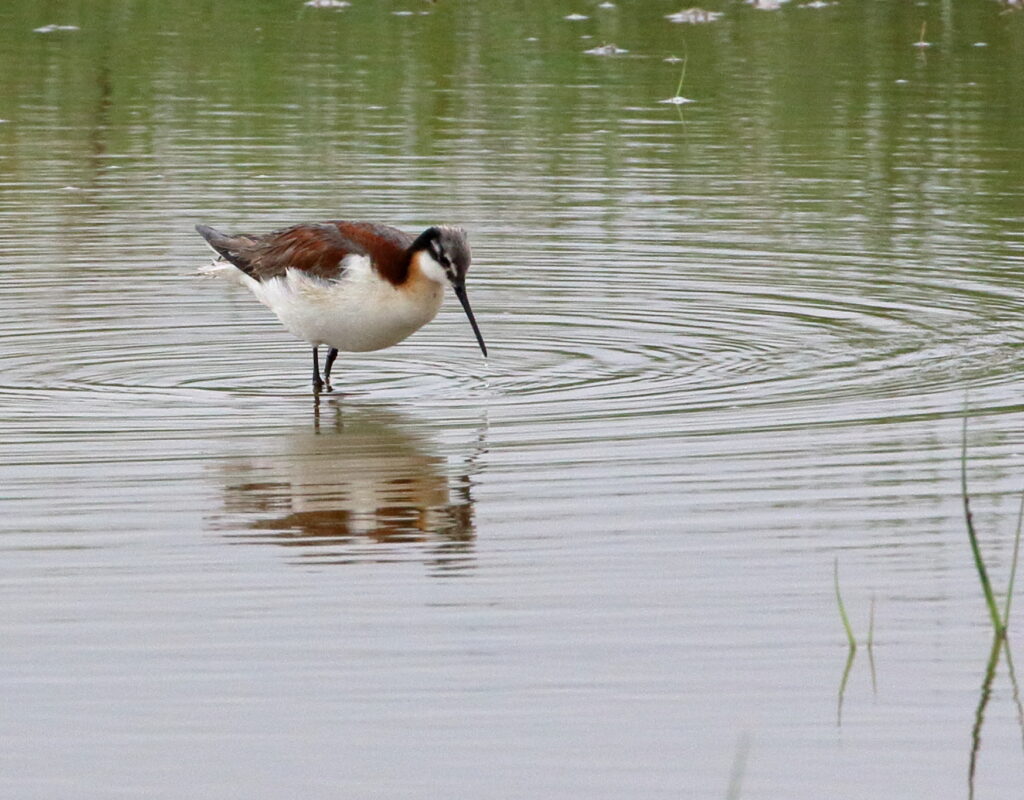

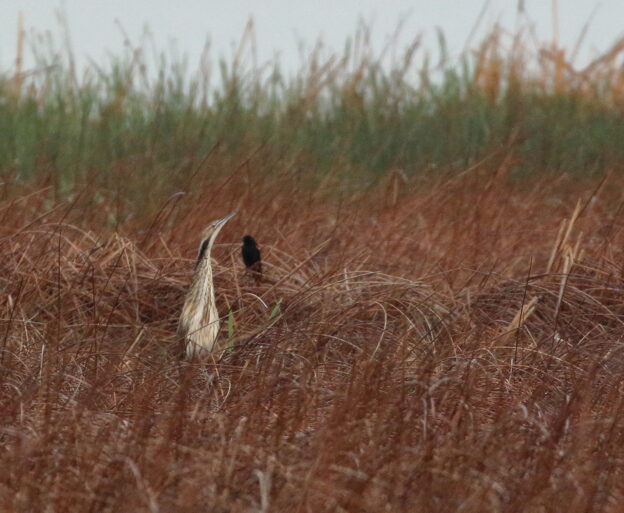
Thanks for guiding us, Sneed! It was good to see you!
Thanks, Micki. I hope to find time to write about our outing to Benton next 🙂
I’m baaaack, feeling relaxed now that I’m free of deadline pressure and the whims of a demanding editor, lol.
It’s a fine day in any birder’s life when he/she gets to see and photograph a Bittern. Well done, Sir! Maybe next time so are so lucky you can try to record its bizarre call. Freezeout seems like a great hotspot. Great name, too.
Bird on, Dude.
Ha! Glad you shed that brutal editor. And yes, Freezeout is a must-visit for birders, and good most times of year! Hope to get back there again this summer.